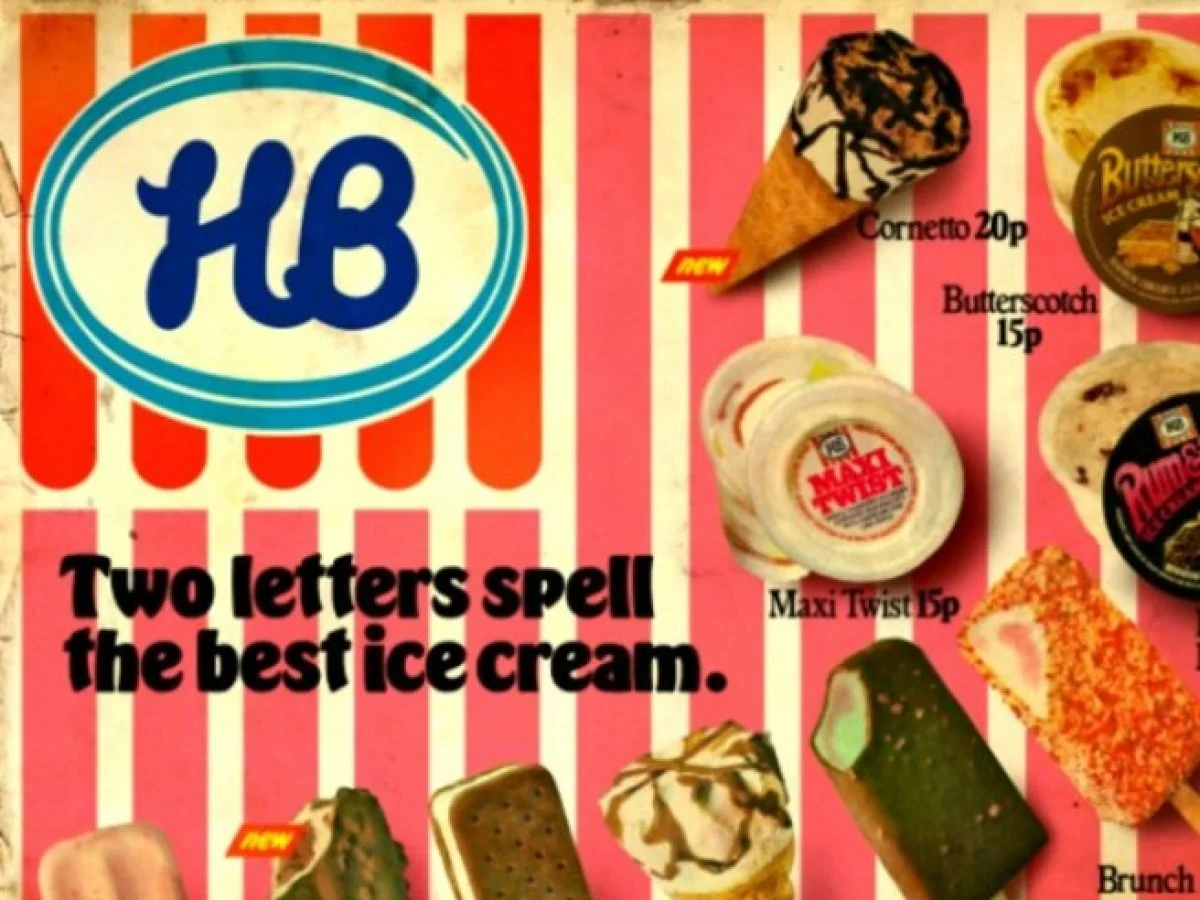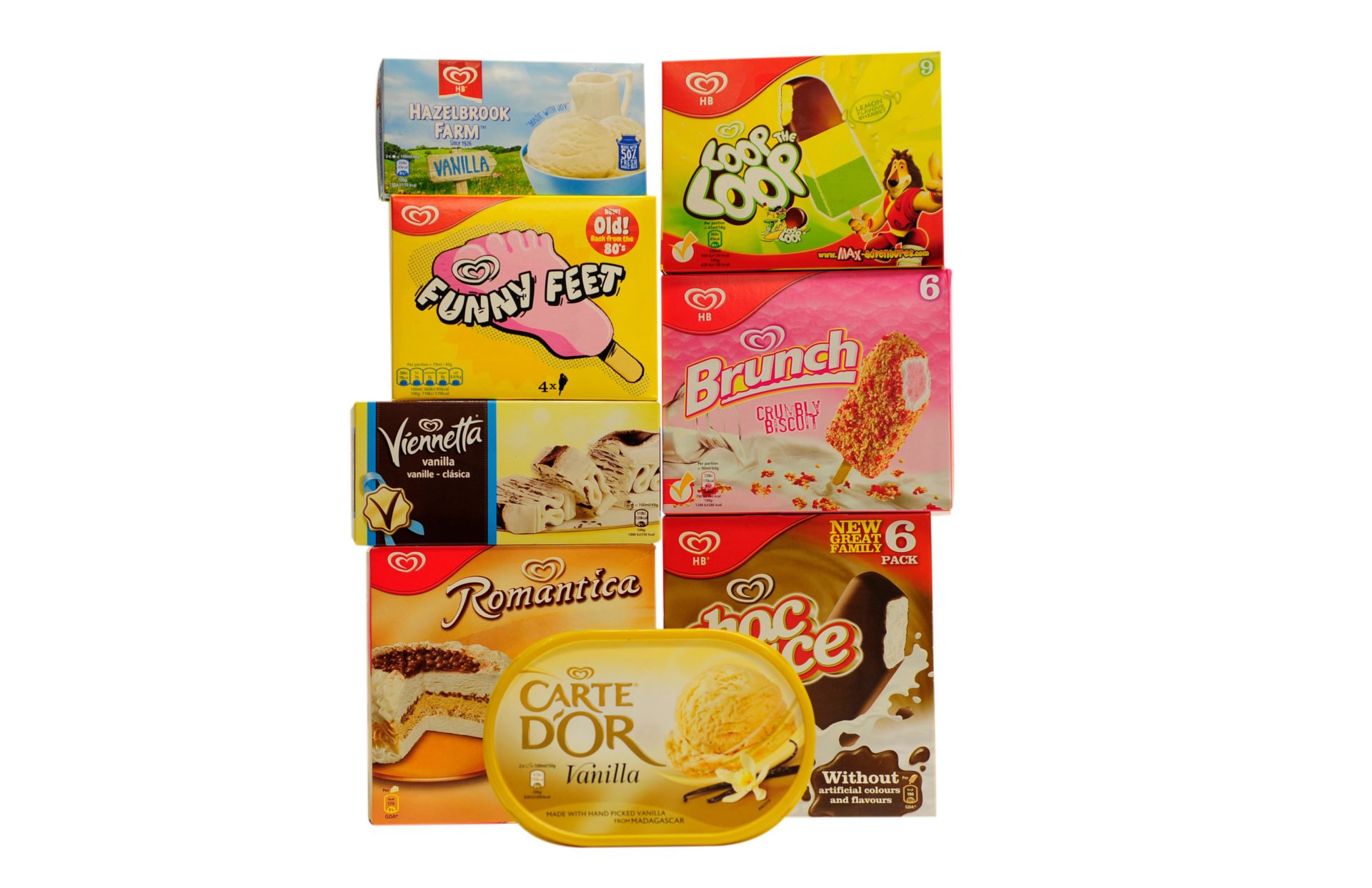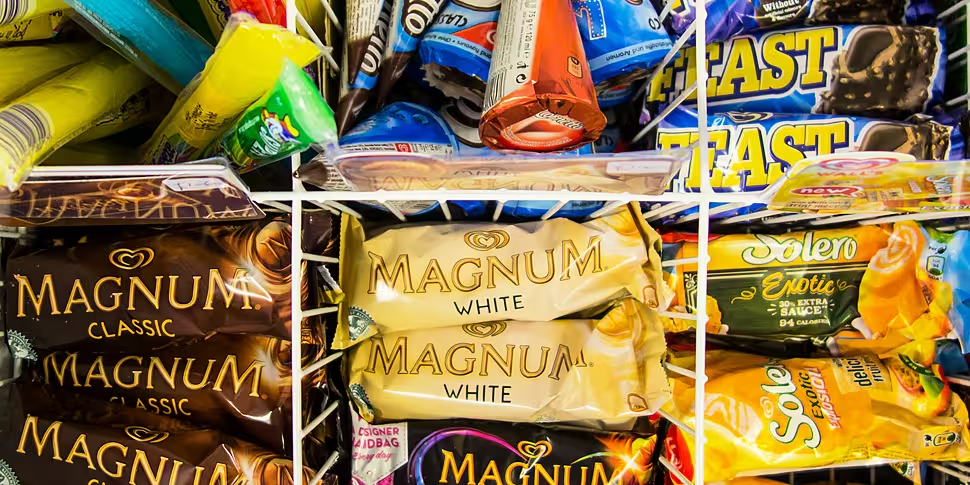As the weather continues to heat up, more of us are heading to the freezer for ice-creams.
But the history of the product has a lot more to it than just marketing.
Newstalk's Simon Tierney took The Hard Shoulder down memory lane.
"In the 1940s and 1950s, if you said in Ireland that you wanted an ice-cream - as opposed to a tub of ice-cream - people would have looked at you aghast.
"It was advertised and called 'cream ices', so it was a complete inversion that we use now.
"That history is very much tied into Rathfarnham in south Dublin - that of course is where the Hughes brothers, three brothers, set up Hazelbrook Farm in 1926.
 An old advert for HB ice-cream
An old advert for HB ice-cream"It was bought by Unilever in the 1970s.
"It's confusing because when you go abroad, or at least to the UK, and you see Walls Ice-Cream and it has the same logo as HB, it's because Unilever basically bought up all those companies.
"But that was a real farm, it was Hazelbrook Farm, and it was very very successful".
The history of Irish ice pops, a thread:
The Wibbly Wobbly Wonder was launched by HB in Dublin in 1974 as a cost saving measure, because half of it was made up of jelly which was cheap to make. It cost just 3 pence. 1/5 pic.twitter.com/9Xz3bVzhFy— Simon Tierney (@tierneysimon) August 11, 2022
He says ice-cream only started being put on a stick, as we know it today, in the 1940s.
"They said that it comes on a stick, which makes it more hygienic.
"They actually promoted it and publicised it on the back of the fact that you didn't have to touch the ice-cream when you were eating it, because it had this wooden stick going up the middle of it".
While he says the Wibbly Wobbly Wonder, launched in 1974, was something different.
"This was an economists dream.
"There was someone in the accounts department in HB in the early 1970s, who thought 'Is there a way we can have the same size ice-cream, but with less cream in it?'
"So they thought 'Ok, we can still call it an ice-cream - but we'll be put the top half as just jelly'.
"Jelly is just sugared water with a bit of gelatin in it [and is] very, very cheap to make.
"So you're actually halving the amount of cream that you need in each product".
 A close up of HB products. Picture by: Medicimage Education / Alamy Stock Photo
A close up of HB products. Picture by: Medicimage Education / Alamy Stock PhotoAnd what of the Cornetto, that's still going strong?
"They arrived in the 1970s... much more recently than I thought.
"But they had actually been invented in Naples in 1959.
"This genius, he realised that with the Cornetto he could invent the world's first pre-packaged ice-cream cone.
"Before that you would have to get it fresh from an ice-cream van or vendor."
Simon explains: "The challenge was, from a manufacturing perspective, how do you prevent the moisture from the ice-cream going into the cone?
"So they coated the inside of the cone with an oily slick, and then coated that with chocolate... so the ice-cream wasn't able to go through to the cone."
He thinks this has likely led to its continued success.
"The Cornetto, I reckon, is probably one of the most successful ice-creams in history.
"You go anywhere in Europe, you can find a Cornetto under different names and under different brands".









